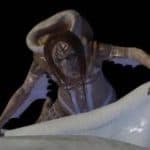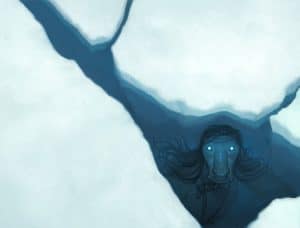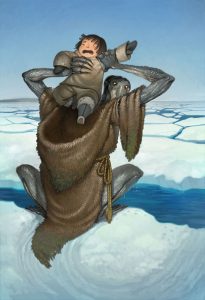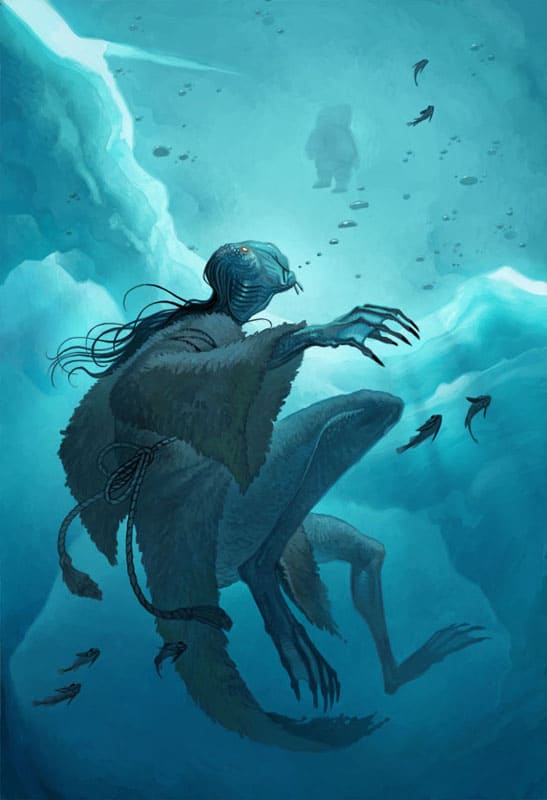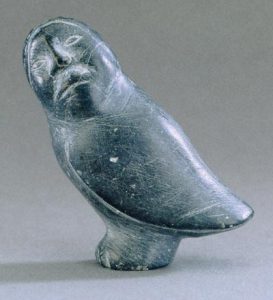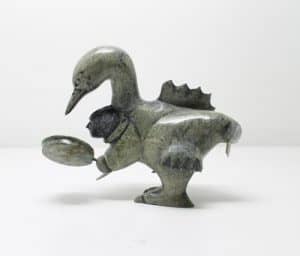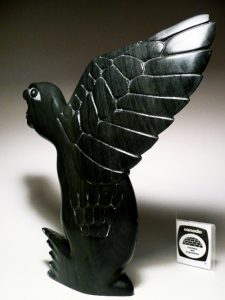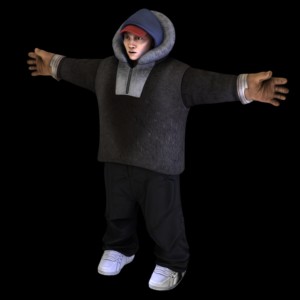The myth of Qalupalik is well known even outside of Inuit circles, but for those unfamiliar, here is a quick primer: Inuit parents use to tell their kids to stay away from cracks in the ice, lest they be kidnapped by sea dwelling creatures call “Qalupalik”. They lived to kidnap children and though the myths vary depending on the version, the idea is that they did not killed kids but “played with them”, keeping them alive underwater to watch the world pass them by and occasionally using them to lure other children into their water deeps.
There are some amazing retellings of this myth, from Inhabit Media‘s book Qalupalik, to Ame Papatsie’s excellent short film, Qalupalik to Robert Munch and Michael Kusugak’s A Promise is a Promise the Qalupalik have been well represented in modern media by artists of all cultures. We set out to create something a little different for our game and first looked at the wide variety of influences to see what had been done before. Here are some samples from various artists that we used to influence our design process.
The work of Inhabit Media of Iqaluit, specifically their commissions from Joy Ang show a modern horror look at these creatures and played no small part in the original influence on our designs. Joy’s work, as well as the other Qalupalik stories that Inhabit has told help open the door for Qalupalik as more than just a myth but a horrible, ugly creature.
Qalupik- Joy Ang
While Joy’s take on the Myth is modern and in tune with the feel and intricacies of modern horror, we also consulted the past. Nunavut has a long artistic history and finding the Inuit artists take on the Qalupalik is not a difficult task. Prints from Cape Dorset, carvings from Pangnirtung all speak to the way Inuit artists represent the Qalupalik and helped inform the intricacies of our designs.
Qalupalik- Print- Cape Dorset
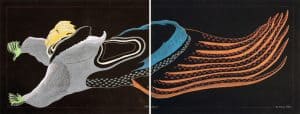
Common themes begin to emerge. The Amaunti, the terror in the victims and association with water and fish like species. All of these would go into our final designs. Still, we knew we needed to add a unique “Pinnguaq” twist to these characters, something that would allow them to work in the context of a game and also make our telling of this myth unique.
Jonathan Wright of Apex, Nunavut was hired as our character designer and concept artist and his influences and ideas took us to the next step. Jon is a talent that is hard to match both as a designer and an artist and within a few days on the project we had a direction for our Qalupalik. Two unique concepts from Inuit culture and history immediately jumped out as vital for use in our characters. Transformation and Tattoos.
Transformation
Transformation in Inuit culture and specifically in Shamanism is an exciting part of Inuit oral history and a wonderful storytelling technique. Humans given animal characteristics, Shamans with the ability to switch into an animal at will. These tools provide an excellent connection to the land in Inuit culture and as a storytelling technique provide a closeness with all living things that transcends the “us and them” relationship we have in western culture and makes it a simple “us”.
Inuit carving in particular revels in transformation creating some of the best and most infamous scenes. Transformation imagery comes out of all regions of Nunavut, as shown by these examples from Baker Lake (Owl by Paul Toolootook), Cape Dorset (Loon by Pudlalik Shaa) and Sanikiluaq (Bird by Emikotailuk)
Transformation will play a very key roll in the game “Qalupalik” and we’ll expose more details on that as time goes on and we fine tune those features. As we explored transformation we knew we had the tool to make each of our characters unique.
Any video game’s enemy list features “classes” of bad guys. Different types of bad guys that help make a well rounded game. You have the slow and powerful enemies, the fast and agile, the “grunts” and the end bosses. Transformation will allow this for us in Qalupalik. The animals our Qalupalik are joined with will inform their statistics and their “class” in the game. In a future blog post I’ll introduce the enemies we’ve developed to date and share how that animal will inform the enemy and their abilities.
Tattoos
Strictly from a visual standpoint, Tattoos are something Jonathan introduced in a recent character update. There are some great works on the history of Inuit Tattoos. At this point we’re still early in their purpose and are using them strictly stylistically as we explore possible ways to incorporate them into game play, but their use will allow us to tell another part of the Inuit cultural story.
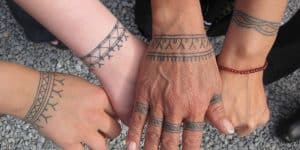
The Character
The first “finished” (though we still hold him/her open to revision) character from this process is our fish based Qalupalik. Designed by Jonathan Wright and modeled/rendered by Underbite in Michigan. The finished product looks like this. In it, we hope you can see all of the influences listed above. In the next blog post we’ll look at how we came to this finished product after a couple of months of back and forth between multiple teams.
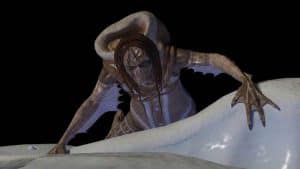
Thanks for reading. – Ryan
